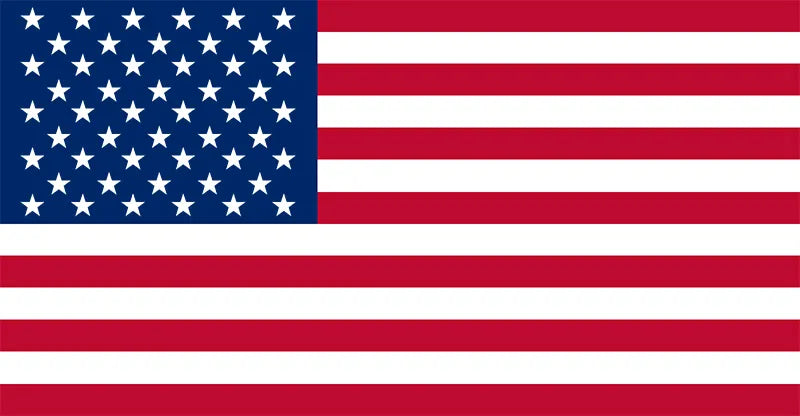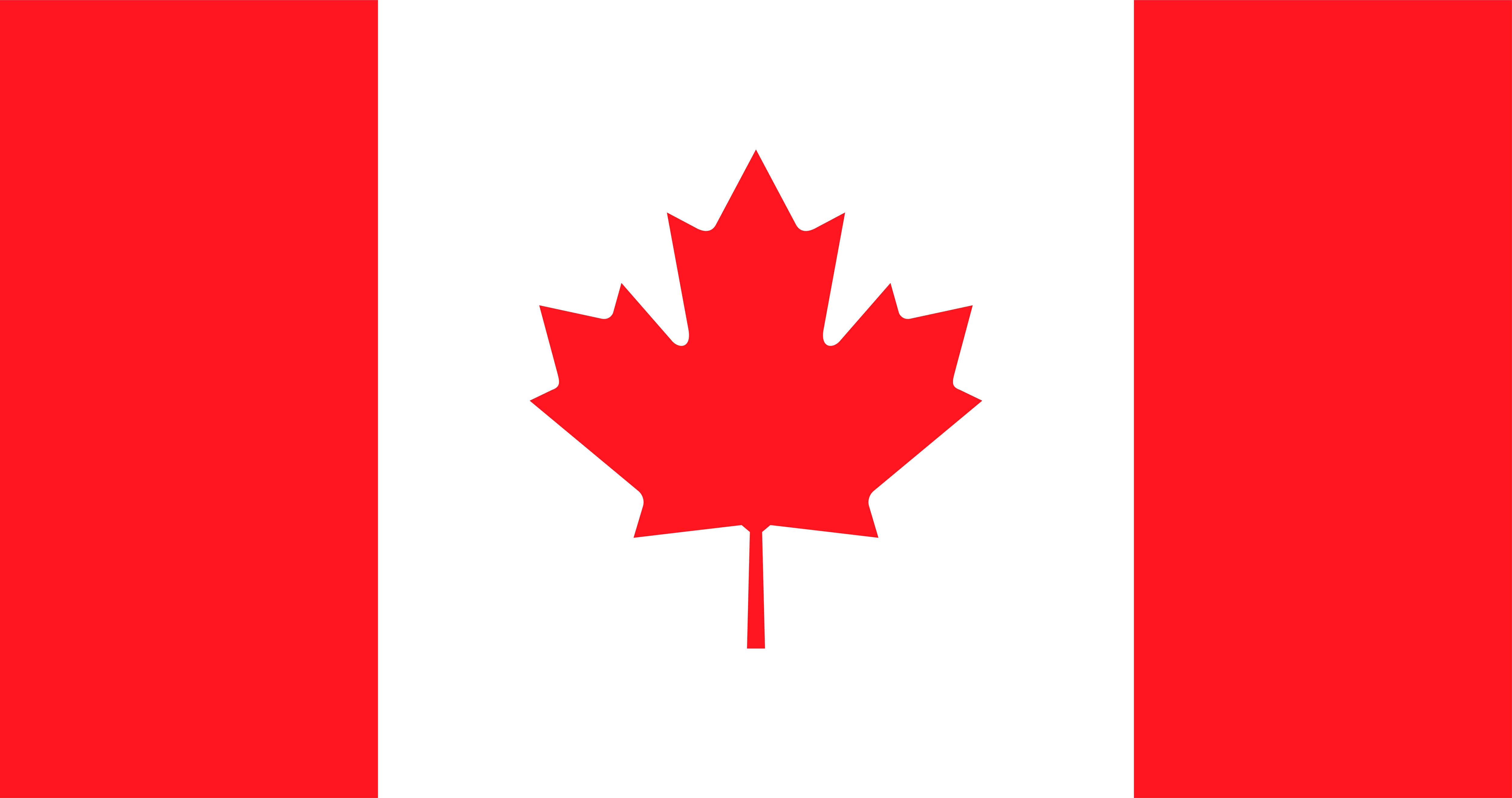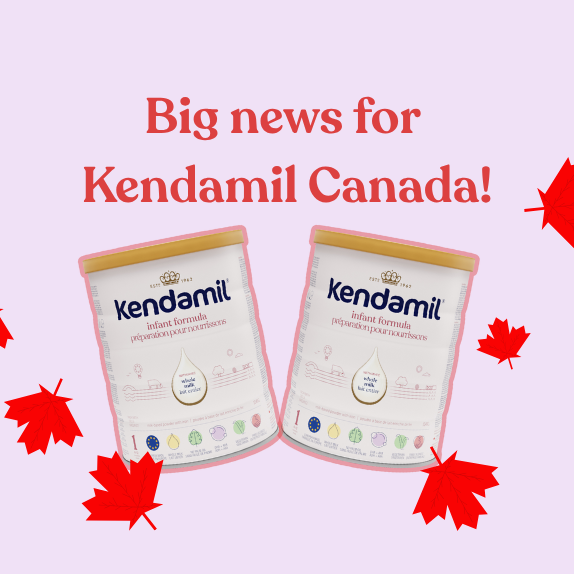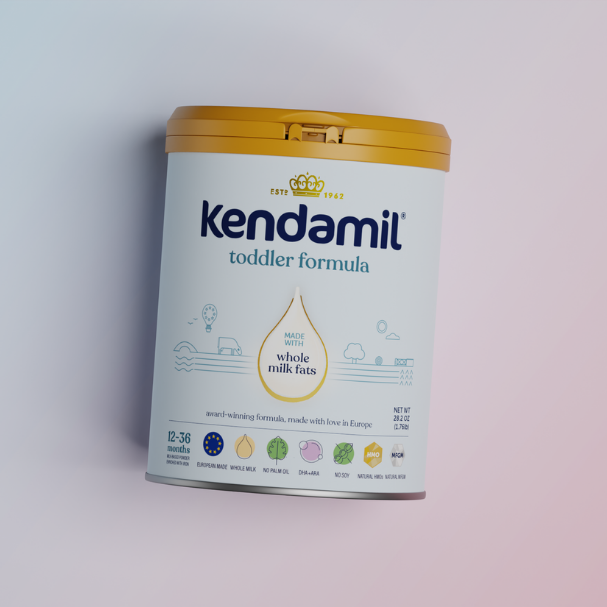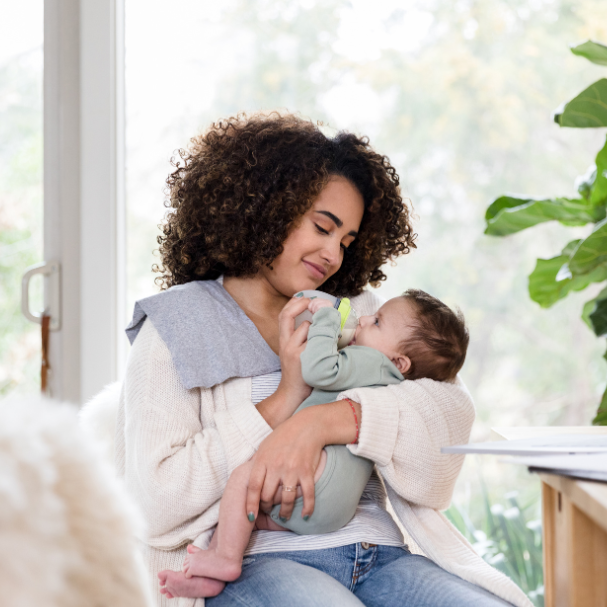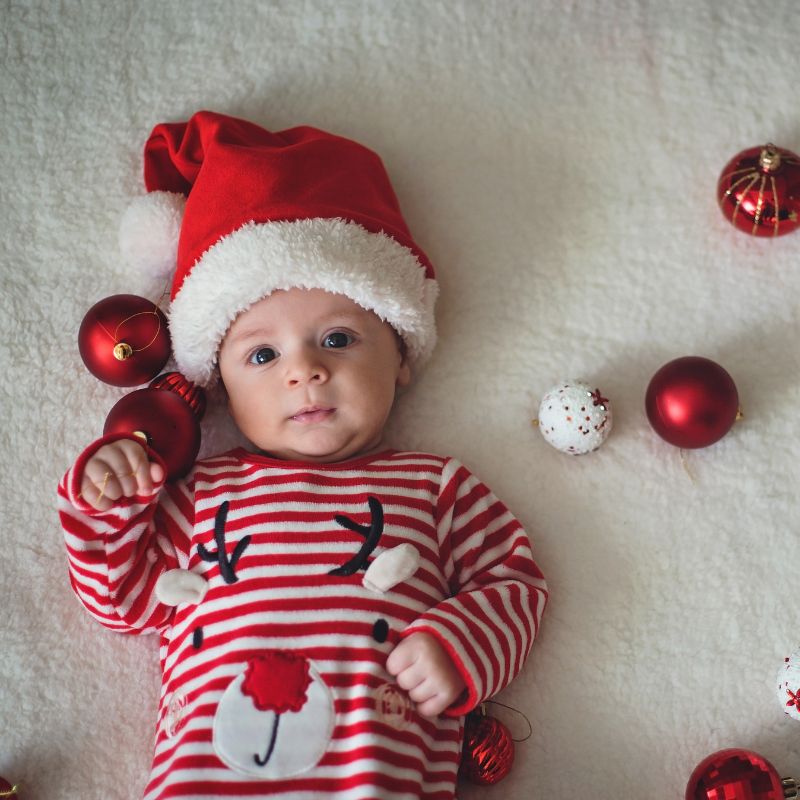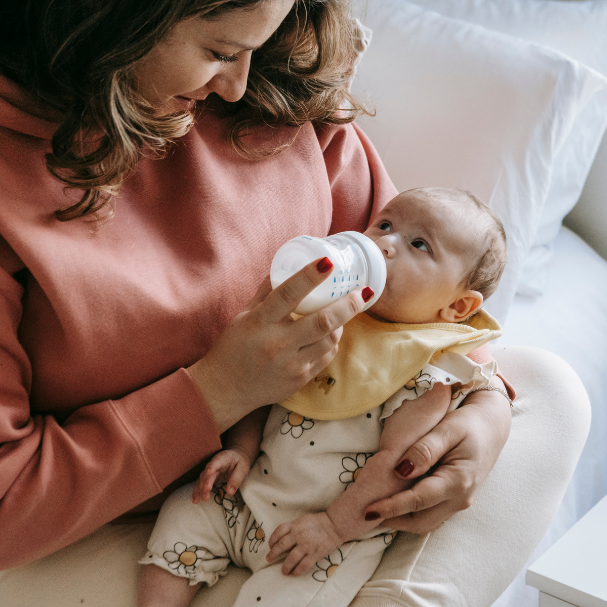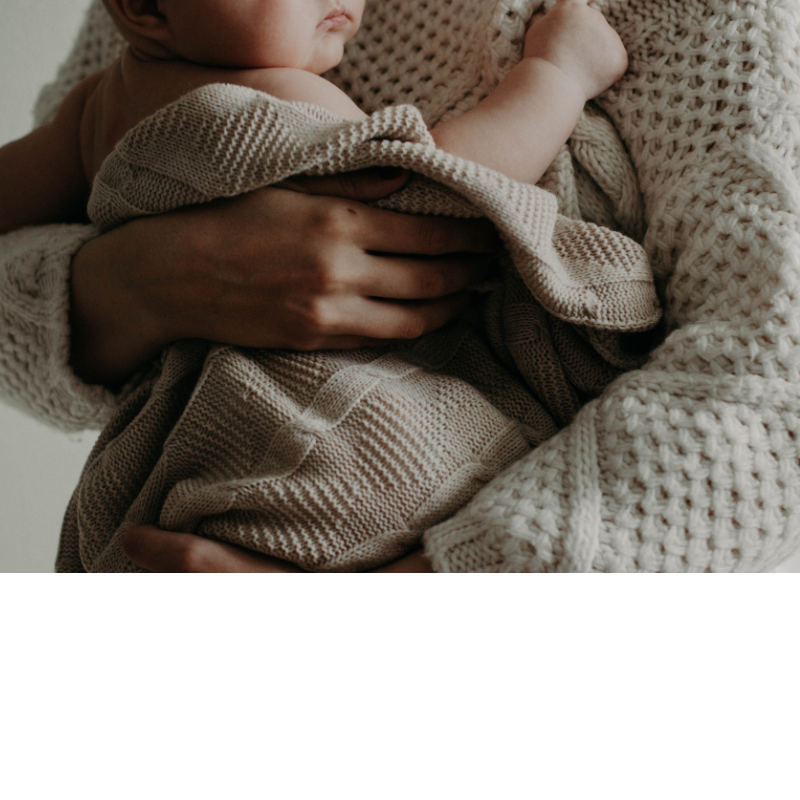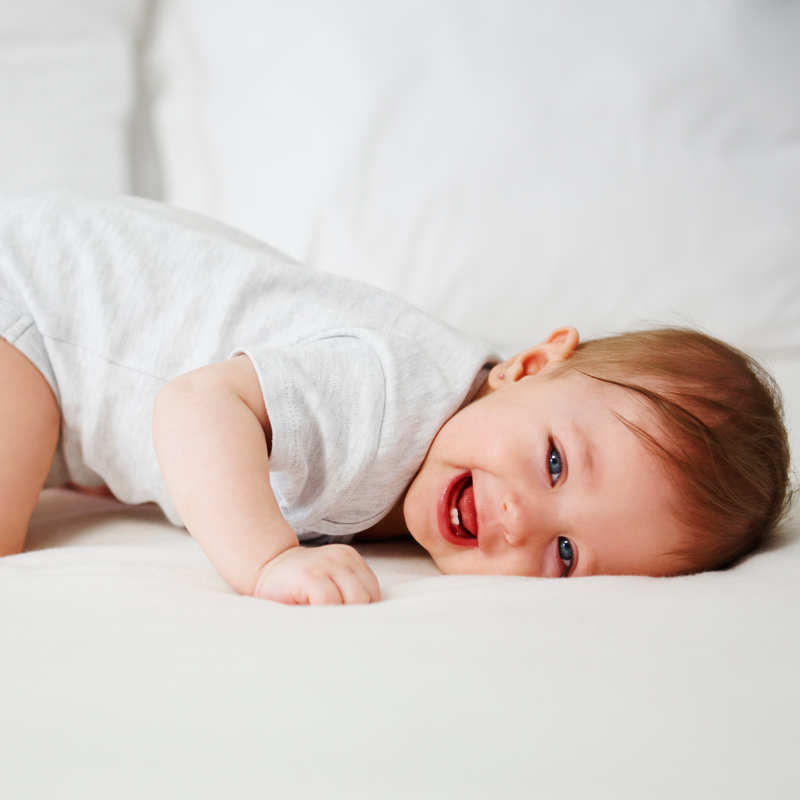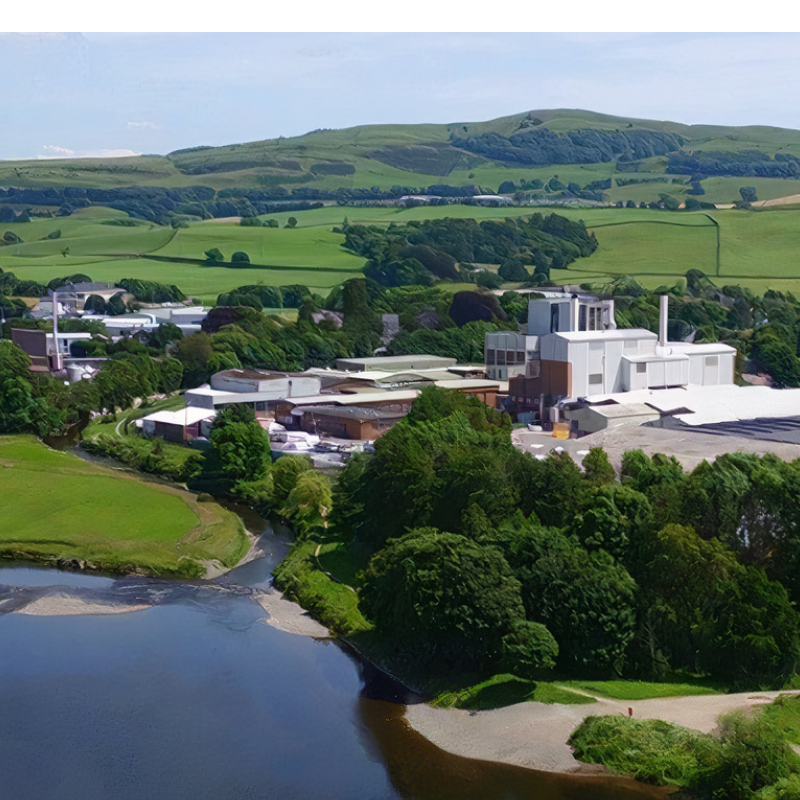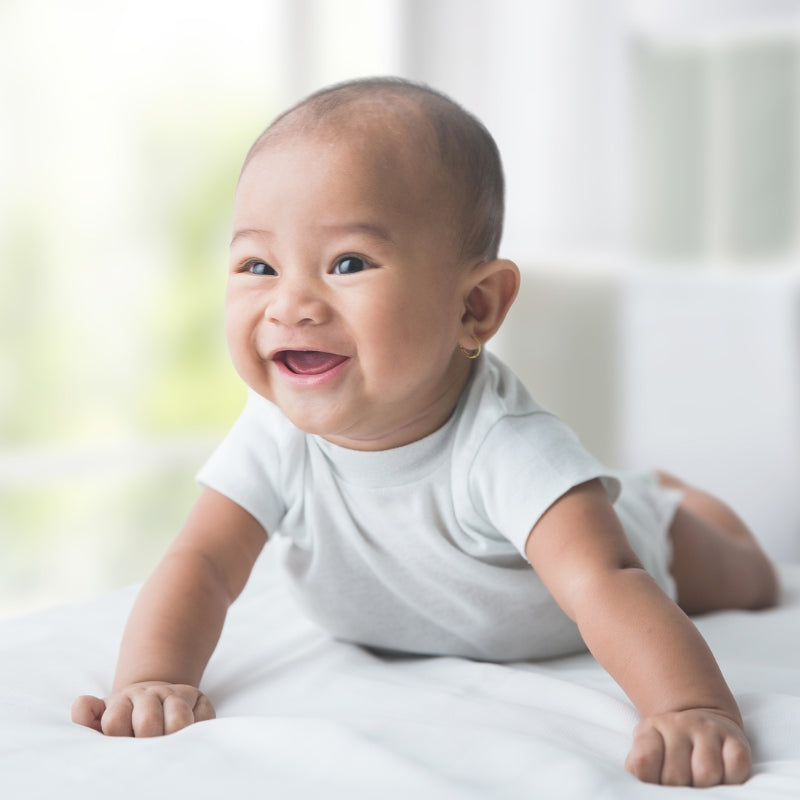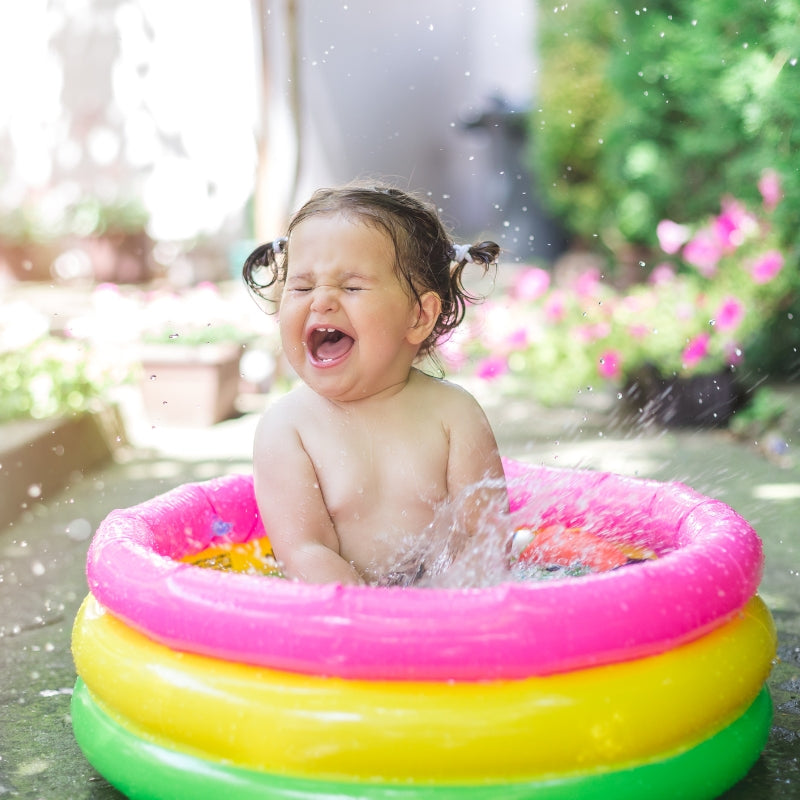Little babies come with lots of stuff, and as you start to pull together your baby essentials list, you soon start to realize there’s more to prepare than you thought. We’ll help you navigate through this list of newborn essentials, breaking it down into what is necessary, what’s a nice-to-have and what baby gear to steer clear of for safety reasons.
Large baby gear recommendations
From strollers, to the crib, to the car seat, these are your largest and most likely the most expensive items on your list. They’re also some of the most important items when it comes to the safety of your baby, so don’t rush when weighing up your options on these items.
- The essentials:
-
Bassinet or crib: depending on your preference, the safest place for a newborn to sleep is in their own bed. This should be completely clear with a firm, flat mattress. If you live in an apartment, a smaller, more compact bassinet is a great idea. If you prefer to get baby a crib then we’d recommend placing your crib near your bed so you can keep an eye on them at night. Always check the crib or bassinet you’re buying meets safety standards of the CPSC.
-
Stroller with diaper bag: with so many strollers to choose from, it can seem really daunting. Choose based on your lifestyle. Live in a city? A more compact stroller such as the Stokke Babyzen YoYo stroller might make it easier to navigate narrow streets and public transport. Live in the countryside and love your outdoor walks? Then a more robust stroller with larger wheels would be a better choice. When it comes to choosing a diaper bag, make sure it fits under the stroller you’ve chosen - you can also opt for a backpack style if you plan to use both a stroller and a baby carrier.
-
Car seat: understanding what car seat you need can feel very overwhelming. We suggest reading through these safety guidelines from the AAP, CDC and healthychildren.org who all offer the same guidance when it comes to car seat safety. Newborns should be placed into a rear-facing car seat specific to their weight and height. You can buy car seats that will modify as baby grows from rear-facing to forward-facing.
-
Baby bouncer/rocker: once baby starts to be a bit more alert and is awake for longer periods of time, you can start to put them into a baby bouncer/ rocker up until the age of 6 months, or when they can sit up unaccompanied. Just be mindful that if they fall asleep, their designated safe sleeping space ie. their crib or bassinet is the best place for them to nap, not their bouncer.
-
Playmats and play gyms: you will need a flat, comfortable surface where baby can practice their tummy time each day, ideally this should be kept clean and only used for baby. You don’t need to buy a super expensive or flashy play gym, even a simple playmat such as this one from Sweet Jojo Designs will do the trick. Baby prefers to look at your face than dangling toys anyway.
- Nice-to-have:
-
Baby carrier/ wrap: these are not absolutely necessary but great for those who need their hands-free a bit more. Slings and wraps can be a great way for baby to have those contact naps while you tend to other children or need your hands for other activities. Baby carriers can be a great option for when you’re traveling. For baby’s safety, do make sure you’re aware of safety advice when it comes to using wraps and carriers.
-
Changing dresser: these can be very expensive and aren’t always a total necessity - a simple changing pad on the floor can be a cheaper and safer option. If you are getting a changing dresser, opt for one that has drawers for extra storage.
- What to avoid:
- Baby walkers: the AAP has called for a ban on the sale of baby walkers in the US, however a lot of retailers are still selling them. They pose various risks such as falling down stairs, and reaching for objects they shouldn’t. Some studies have also shown they don’t encourage development and may even delay baby’s walking.
Formula feeding essentials
For all our formula-feeding parents we got your covered on what you need to keep baby safe while feeding them. As a European brand, based in the UK, we follow the UK NHS guidelines on how to prepare a feed and sterilize bottle equipment. The NHS has some of the strictest and safest standards. You can see the US CDC guidelines here and the UK NHS guidelines here.
- The essentials:
- Infant formula: when it comes to formula, we’ve got you covered whether you want an Organic formula, a formula made from Goat milk for babies with sensitive tummies or our Classic formula, which is the most affordable formula in our range but contains both GOS & FOS as well as whole milk from grass-fed cows. All our infant formulas meet FDA standards and are EU approved, are made in Europe, and are nutritionally complete for babies 0-12 months.
-
Bottles: every parent will have their own preference when it comes to which bottles they love, but baby might also have a say, as some babies prefer certain nipples over others. Check out Babylist’s Best 14 Baby Bottles list here, as recommended by parents and experts.
-
Bottle washing brush: cheap, but necessary to keep for the sole use of cleaning baby’s bottle equipment only.
-
Sterilizer: there are many to choose from; UV, steam or the simple boil in the pan. There is something for everyone’s budget.
-
Kettle: keep it simple and safe when preparing the right temperature water for baby’s feed. Boil tap water in a kettle and let it cool for 30 mins until it reaches 158F.
-
Muslin/ burp cloths: these don’t need to be super fancy or expensive, afterall baby is going to be spitting up on them.
- Nice-to-have:
-
Thermos: for when making a feed on-the-go, a thermos will come in handy to carry hot boiled water with you. Just check the manufacturer’s instructions on how long it will keep your hot water hot for.
-
Formula container to-go: not so many of these out there but these containers allow you to pre-measure your formula scoops at home so you can carry your formula with you in a smaller, secure container to add into baby’s bottle when making a feed on-the-go.
-
Cooler bag and ice pack: great to have if you plan to travel or take a pre-made feed out the house and cannot make a fresh feed - they will keep your pre-made formula safe for up to 4 hours.
- What to avoid:
-
Drying rack: these can be a breeding ground for bacteria and need to be washed regularly to keep them sanitary. A simple cotton kitchen towel can work to drain your bottles on, but there is no need to wipe the equipment dry, leave it to drain and then put it into your sterilizer.
-
Formula mixing pitcher: as we follow NHS guidelines we recommend making a fresh feed as and when baby is ready for a feed. We only recommend storing formula in the fridge if making a fresh feed is not an option. The longer formula sits in the fridge the more chance for bacteria to grow and multiply. This is why we would avoid using a pitcher.
- Formula dispensers: these are very popular with some parents raving about their formula dispensers. However research has shown that these dispensers were more likely to dispense water below a temperature of 158F. A kettle is cheaper and safer.
Baby clothes and outfits
Now we have the boring bits out the way, we can move onto the cute stuff - baby clothes. Although you can be tempted to buy endless adorable outfits and baby accessories, a lot of these things are just not needed and likely won’t get used. Let’s walk through the essentials:
- The essentials:
-
Pajamas: for the first 3 months, baby will most likely be asleep more than they’re awake. So a set of 7 footed pajamas (depending on how often you do your laundry) will be enough to cover you. Pro tip: opt for zip up pajamas that have built-in fold-over mittens, they’re much easier to work with during the nighttime changes.
-
Bodysuits/ onesies: you’ll need about 7 of these too. Buy the right sleeve length based on the season your baby will be born in. If they’re a summer baby, opt for short sleeves. If they’re a winter baby, opt for long sleeves. Pro tip: buy your bodysuits and pajamas in a similar color palette to avoid multiple wash loads.
- Baby accessories hat & socks: for summer babies, you’ll need a wide-brim sun hat to protect them from the sun, and for winter babies, you’ll need a soft winter hat to keep them warm. You’ll also need socks to keep their feet warm, but in the summer months, you can let them explore barefoot.
- Cardigan: cardigans are much easier to take on and off a newborn, and are a great option for adding an extra layer if baby is born in the winter months.
- Nice-to-have:
-
Cute outfits: not really necessary, but who can resist a cute outfit. If you’re on a budget, 2-3 outfits would be enough that you can rotate for occasions when you’re out the house with baby, or meeting family and friends.
- What to avoid:
-
Synthetic fibers: opt for cotton or natural materials for baby, their skin is so delicate and synthetic materials can cause skin irritations.
-
Embellished clothing: clothing with beads, threads, embellishments, cords etc should be avoided on baby clothing as it can be a choking and strangulation hazard.
- Baby shoes: are completely useless as baby won’t be walking until they’re over 12 months. Save your money, you’ll soon be buying them plenty of shoes.
Sleeping essentials
When it comes to sleep essentials, safety is key. We would always recommend following the safety advice from the AAP or CDC when it comes to recommendations on sleep products and guidance on safe sleep practice.
- The essentials:
-
Firm, flat mattress: a clear and flat crib is best for baby’s safety. There should be nothing else in baby’s bed besides the mattress and a bed sheet.
-
Fitted cotton crib sheets: baby’s bed sheets should be lightweight, fitted and ideally cotton. Soft bedding is not advised.
-
Sleep sack or swaddle blankets/ wraps: If choosing to use a sleep sack, you can choose the tog based on the season your baby will be born in, as well as their size. For summer babies, 0.5-1 tog will likely be enough, whereas babies born in winter might need a 2.5 tog sleeping sack. When it comes to swaddling, you can use a large swaddle blanket or swaddle wrap. Check out the healthychildren.org guide on swaddling here for more safety tips.
- Nice-to-have:
-
Night light/ sound machine: again, not a necessity, but can help during those night feeds and nighttime diaper changes.
-
Baby video monitor: when baby is under 6 months they should be sleeping in the same room as you, so this is not really a necessary item when they’re newborn. As they get older you may wish to invest in a baby monitor.
- What to avoid:
-
Bumper pads, pillows, weighted blankets: these are not recommended by health experts as they can increase risk of accidents and SIDS.
- Baby nests, docks, pods, loungers, rockers or nappers: again, not recommended by experts as they can increase risk of SIDS and suffocation.
For more sleep safety info check out the healthychildren.org website here. For more information on which baby sleep items to avoid check out this guide here.
Bath time and changing essentials
Newborn babies require a lot of diaper changes, sometimes up to 12 a day when they’re really little. So being well equipped with the right diaper changing essentials is key.
- The essentials:
-
Diapers: you’ll need lots of these in the early days, expect that you’ll need around 10-12 diapers per day. We recommend buying in bulk quantities. For those who want a subscription, The Honest Company offers a subscription service where you can also save money and order in bulk. Pampers run a ‘Club’ with various rewards and coupons up for grabs. There are many diaper brands that you can subscribe to on Amazon also. Wondering what size you’ll need? Check out Pampers diaper size guide here. If you’re contemplating cloth diapers but don’t know where to start then check out this guide from Babylist.
-
Diaper changing pad: you’ll be using this everyday all day, so we recommend getting one that can easily be wiped clean. You can also use a towel instead and change this regularly.
-
Diaper rash cream: there are many to choose from, and definitely worth having handy for if and when baby gets a little bit of diaper rash. Make sure baby is changed often to avoid diaper rash.
-
Diaper pail: great for keeping smelly diapers contained. Check out which diaper pails made Babylist’s Best Diaper Pails 2024 list here.
-
Diaper sacks: scented diaper sacks to hold off bad smells when you’re changing on-the-go.
-
Cotton wool/ baby wipes: for the first few weeks it is recommended to use cotton wool and warm water instead of baby wipes. If using baby wipes, opt for ones that are free from fragrance and alcohol.
-
Towel: you’ll need a couple of towels for bath time. Some babies also prefer to be wrapped in a towel or muslin during their bath.
-
Nail scissors: you’ll be surprised how long their nails will grow - get ones with curved ends designed for using on baby nails. Pro tip: if baby wiggles or cries when you try to cut their nails, you can trim them while they nap.
- Nice-to-have:
-
Baby bath: these can be fairly pricey so if you’re looking to save on some items the kitchen sink could be a useful spot to bathe baby. You just need to be extra careful as sinks are slippery and have faucets that stick out. It is actually only recommended to bathe a baby 3 times a week up until they’re one year old.
-
Bath thermometer: again, not totally needed, but can be used to check the water is between 90-100F. To check baby's bath water is the perfect temperature without a thermometer, simply dip your elbow into the water and it should feel the same as your body temp.
-
Diaper caddy: a great way to keep all your diaper changing items together in one place. But you can easily use any other storage basket you have at home also.
- What to avoid:
-
Baby soap/ bubble bath: it is recommended to use water alone to bathe baby during those first few days and weeks due to their sensitive skin. Baby soap should be used sparingly.
-
Oils and lotions: should be avoided until baby is at least 1 month old, again due to their sensitive skin.
- Bath seat: these are not recommended by the AAP for risks of drowning.
For more tips on bathing a newborn check out this guide from healthychildren.org.
Having a baby is an exciting time, as shopping for their little bits can really make it all seem so real! It can also feel a bit overwhelming in terms of what to get and what to avoid, so we hope this guide has been helpful.
Why not check out our other guide on How To Navigate The Newborn Phase here.
